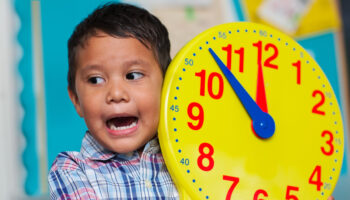Guest Blogger- Jennifer Roberts
Extended Day Services manages 22 school-age programs, mostly in the South Hills of Pittsburgh. We have been around for 30 years and have tried many different curricula and SEL concepts over the years. Three years ago, we began using SPQA and slowly integrating its components into our programs. We integrated most of the SPQA elements into the STEAM segment of our day so we can ensure that we are including all the elements. We also had one of our sites create a video demonstrating the techniques after we integrated SPQA in all our sties. We feel it is much easier to understand the SPQA concepts if the staff can view a video. COVID-19 dramatically impacted our ability to implement many of the group concepts of SPQA; however, we are excited to return to full implementation for the upcoming school year.
I cannot say enough about the SPQA tool! I was formally trained on this tool several years ago; however, the tool is simple enough that many of my staff, who were not at the formal training, have been able to effectively implement it also. We have used SACERS, ASQ and SPQA; however, SPQA has been our favorite tool – because it is easy to implement, and it creates meaningful, specific changes in our programs.
We integrated SPQA into our programs by dividing the SPQA into smaller segments, focusing on specific concepts in each of the first three months of the school year. This approach,
• Allowed the process to feel more controlled and allowed for teacher input
• Allowed us to roll out a new concept in a non-threatening step by step approach
• Allowed the teachers to practice and “own” some of the elements of the SPQA before new ones were added
In September, we focus on “Supportive Environment” standards
1. Warm Welcome each day
2. Doing an Ice Breaker – each day – We compiled a list of 30 ice breakers and staff are free to add their own
In October, we focus on “Interaction” standards
1. Positive, Enthusiastic Tone from Teachers
2. Descriptive Encouragement from Teachers
3. Leadership Opportunities for Students – chose students to help with attendance, snack, lead ice breakers, etc.
In November, we focus on “Engagement” standards
1. We begin dividing students into groups each day during the STEAM segment of our day to integrate – student leadership, student choice, and student planning,
2. We focus on projects that could be done in a small group setting (about 4 students) like making glitter slime, creating a group poster demonstrating a group idea or concept, answering a question posed by the teacher as a group and presenting and defending their group decision – Anything that would get the students involved with each other.
Allows students to
• Plan how to attack the activity as a group
• Contribute ideas to the group
• Brainstorm and write down ideas
Allows teachers to
• State a learning focus
• Connect the activity to past knowledge
• Model skills
• Give students small increments of time to complete each task
• Encourage children to help other children
• Reflect on the activity with students – to get student input
For the remainder of the school year, we implement all these concepts during the STEAM portion of our day. With this intense practice during that portion of each day, these concepts more easily spread out to the other portions of our day as well.
Interested in learning more? Contact your Quality Coach about individualized supports that a Program Quality Assessor can offer. Also check out the links below




